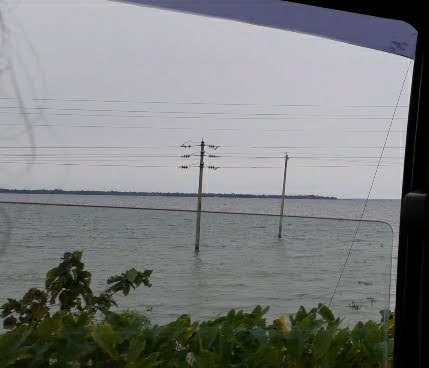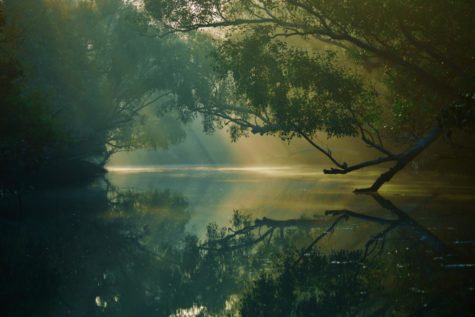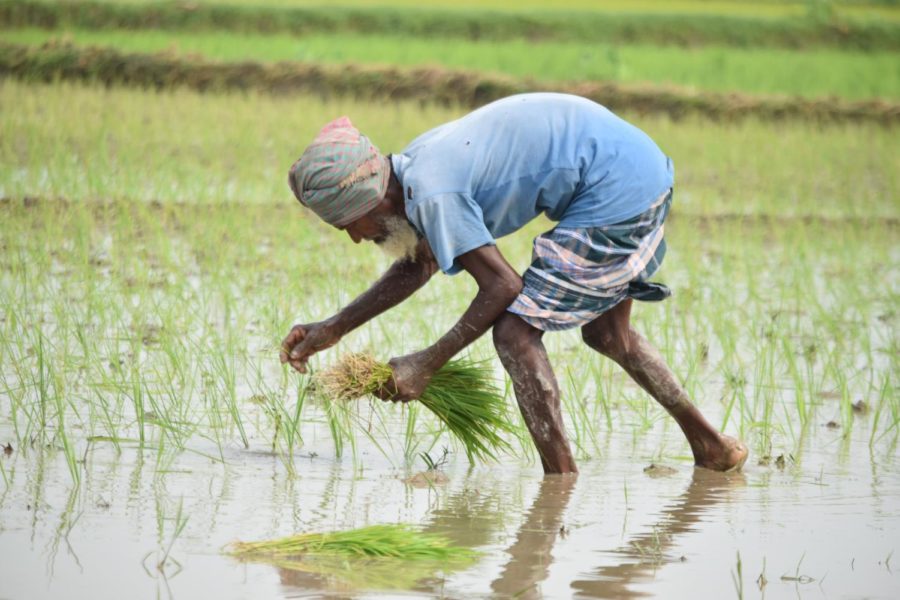Climate Change: The Fight of Bangladeshi Farmers and Coastal Region Citizens
Bangladesh is still struggling with how to approach climate change as COP26 progresses. The government is prioritizing the economy over helping farmers and people living in coastal regions who are devastated by the effects of climate change.
Ashraful Haque Akash / Unsplash
Most Bangladeshi farmers do not have modern equipment such as tractors and automatic seed planters, so they plant seeds and collect harvests one by one with their bare hands.
As the 2021 United Nations Climate Conference (COP26) discusses the effects of Global Warming on the world at large, Bangladesh is getting its moment in the spotlight.
According to a recent World Bank report, rising sea levels and other climate factors may force an estimated 13.3 million Bangladeshis out of their homes in the coastal areas by the year 2050. Bangladesh has adopted various plans, such as the Perspective Plan 2021-2041 and Delta Plan 2100, which lay out the fundamental changes necessary and comprehensive strategies outlining how to approach risks. Among these strategies are developing secondary cities that will serve as hubs of innovation, and providing new economical, educational, and employment opportunities through an emphasis on nature and sustainability.
In an op-ed published in the Financial Times in October 2021, Prime Minister Sheikh Hasina argued, “We will enhance resilience, grow our economy, create jobs and expand opportunities for our citizens, using action on climate change as the catalyst.
However, these listed solutions are very vague and do not propose any tangible projects that will enhance Bangladesh’s condition. Additionally, by focusing on how to prevent future economic setbacks, the government is neglecting the farmers who are already devastated by previous natural disasters.
I met with Moti Miah, a local farmer in the Sunamganj district of Sylhet, Bangladesh, through Zoom. The quotes that follow have been translated by me from Bengali into English. He told me, “I have been a farmer since before birth. Ten years ago, the weather was good with normal rainfall levels. This does not happen anymore. When we need the water for crops, there is no water. And when we don’t need water, there is too much water. This creates irregularities in the cultivation cycle. There has been a decrease in the amount of crops cultivated every year.”
More than 45% of Bangladeshis are employed in the agriculture sector, and rice serves as the single-most important product in demand, both domestically and internationally. About 13% of the GDP also comes from agriculture. Incessant annual floods and droughts will lead to an increase of about 10% of flooded areas by 2050, consequently leading to a reduction in rice production. This issue will not only affect the economy and jobs of farmers, but will also make itself up the food chain and onto people’s dinner tables.
When asked about the biggest challenge that farmers face today, Miah said, “Most of the farmers are poor. When it is cultivation season, they take loans from banks or other bad people who try to take advantage of us. Because of the climate, it is very hard to get the amount of crops needed and make a profit. We cannot pay back the banks. We fall into debt. We also don’t have modern equipment for farming like tractors and automatic seed planters. We have to plant crops one by one and remove weeds with our hands,” he added, baring his fractured palms to me on camera. “It is only written on paper what the government says they will do to help us. We are hopeless.”
Arup Shuvo, a research assistant at the Institute of Water and Flood management under Bangladesh University of Engineering and Technology (BUET) who specializes in the hydrologic and hydrodynamic fields, has been working in the Ganges-Brahmaputra-Meghna delta in the Southern part of Bangladesh. It is the largest delta in the world, created by massive deposits of sediments from the Ganges, Brahmaputra, and Meghna rivers.

When asked about the condition of the Coastal regions, Shuvo said, “Every year, inch by inch, land is being submerged. As the sea level rises, so do the tides. We have embankments, which are banks of Earth built to prevent floods. However, every time a tide hits the coastline, it either compromises or overtops the embankments. If they are overtopped and water seeps into the land, they get trapped behind the embankments. The water makes that land slime-like, and no crops are able to be cultivated in this land — an extremely rare occurrence for Bangladesh soil. In this case, crop farmers are forced to change their professions to prawn and shrimp cultivators.”
For farmers like Miah, who have dedicated their whole lives to developing the necessary skills to farm, changing professions to a rickshaw puller overnight is a frightening yet realistic turn of events. These farmers become refugees and migrate to other areas. Many are forced to reconstruct their lives and, in many cases, abandon their heritage.
Tube wells, a type of water well where water is pumped from underground aquifers, are extremely common in Bangladesh, because of its rich underground reservoirs. They can be found in almost every household and cost very little to maintain. However, the people in coastal areas cannot drink from tube wells, as the region’s underground water is completely contaminated with salt.
Shuvo explains, “As the sea level rises, the lateral pressure of the sea increases. Salt water from the sea creates pressure on underground freshwater which gets pushed towards the central part of the country. In this case, coastal folks have to store rainwater for about six months. Another method of getting water is the Pond-Sand-Filters, PSFs, where people dig ponds and stored pond water goes through sand filtration. If none of these methods work, if the ponds are contaminated by sea surge waters, then people have no choice but to buy water.”
This is one of the most direct effects of climate change that Coastal Bangladeshis are facing right now, yet it remains ignored by the Bangladesh government.
Shuvo notes that most of the solutions listed out in elaborate plans by the government do not translate into anything significant for the Bangladeshi research and conservation communities, as they gloss over actual solutions and focus more on “why” we need solutions.
He continues, “What we can do is to prepare our people, to have pre-planned management routines for catastrophes, so that climate change doesn’t hamper our lives. Our best plan is to focus on adaptability. Suppose a man who has lost his house and occupation; he cannot generate income. So the government gives him a soft loan with which he can buy a rickshaw. But these don’t cover everyone, only lucky people. People themselves somehow end up finding ways to change occupations.”

Shuvo believes that planting ‘green belts’ bordering the coastal regions will be one of the most effective projects to date. He explains, “A green belt is where thick man-made mangroves and trees will be planted surrounding the coastal regions to lessen the shock of cyclones. Bangladesh’s biggest natural mangrove is called Sundarbans, and it is the reason why the people in the coastal regions have not been wiped out, even after so many cyclone attacks. This works as the first line of defense. Most of the force of cyclones are dissipated when they go through Sundarbans. It is the main savior of coastal people. The Government thinks that if we can make a belt of trees along the whole shore line, then it will do two things: A) protect people from cyclones and B) protect the coast from getting eroded.”
While it is unclear how the COP26 will end, it is apparent that every country must do its part for the sake of our world. In Bangladesh’s case, the government needs to focus more on the condition of people already suffering from the effects of climate change instead of only prioritizing the economy. Finding a balance between both while putting solutions into action will result in better conditions for the country as it fights against climate change.
“It is only written on paper what the government says they will do to help us. We are hopeless,” says Moti Miah, a local farmer in the north-east Sunamganj district of Sylhet, Bangladesh.
Paromita Talukder is a Copy Chief for ‘The Science Survey’ where she explores topics ranging from online activism to clubs at Bronx Science. She sees...

